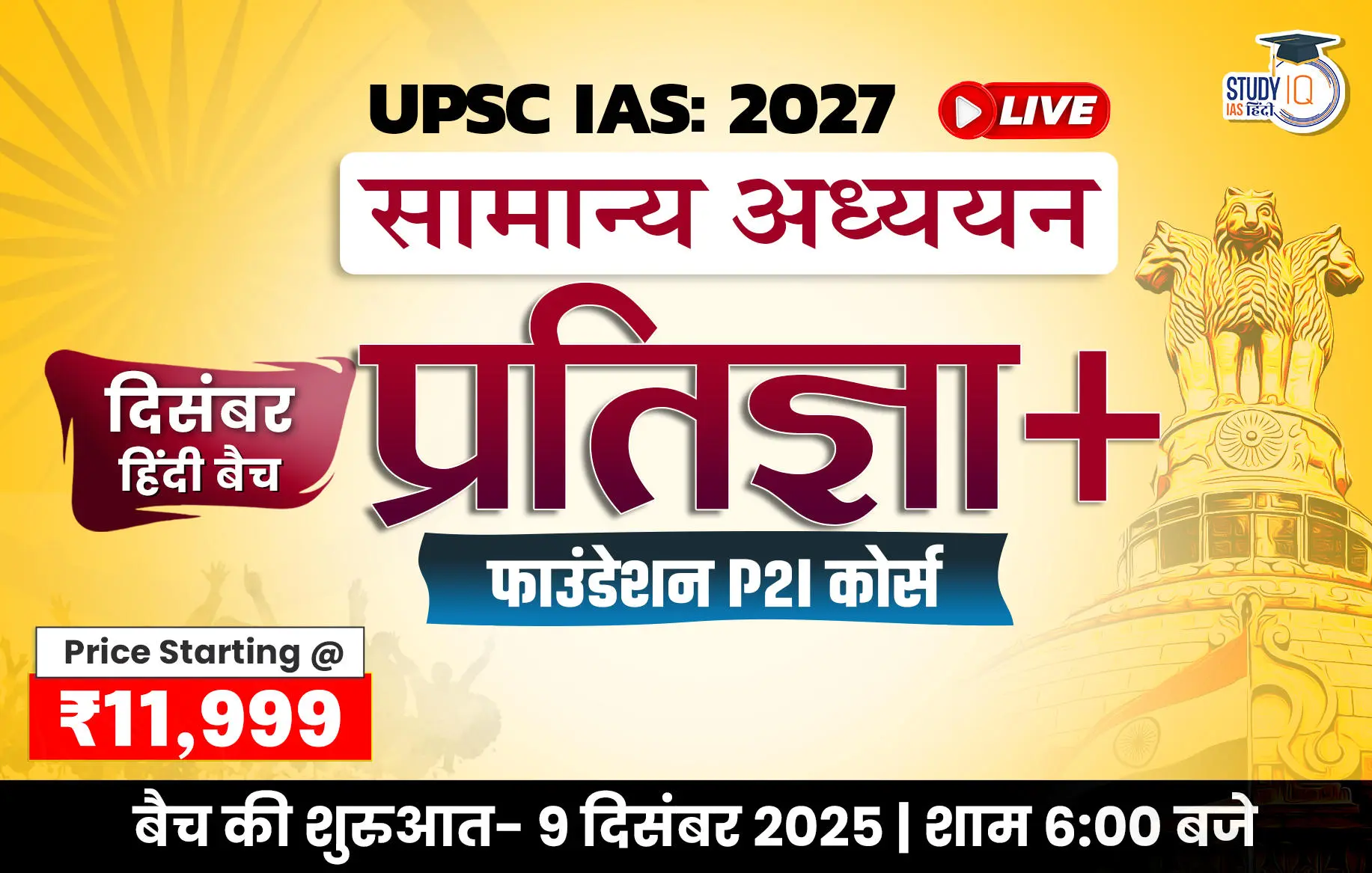Table of Contents
Caste System in India
Indian society has been plagued by the caste system since ancient times, which is a societal ill. The caste system has drawn criticism for years, but it continues to dominate our nation’s social and governmental structure. The caste system is one of the social ills that have persisted in Indian society for millennia. The UPSC Syllabus includes Caste System as a significant topic for UPSC Exam. The UPSC Mock Test can help candidates prepare for the exam with more precision.
Caste System Definition
Caste System is characterized as a system of hierarchical grouping of individuals according to their social status and line of work. Caste-based societal segregation, which is a part of Indian society’s history and culture, is what distinguishes this large and varied nation. In Indian culture, a person is identified by their caste, which also determines their social standing.
The karma and dharma of the people are used to create caste groups in accordance with the Indian caste system. People typically perceive “upper caste” people as better and “lower caste” people as inferior. Since ancient times, India’s caste structure has resulted in blatant discrimination against those who belong to the “lower caste.”
Caste System in India Origin
The ancient Vedic society is where the Indian caste structure has its roots (c. 1000–500 BCE). It has endured throughout the Classical Period, the Middle Ages, the Mughal Era, and British Rule. Many people consider it to be a crucial way to categorise Indian culture. However, a lot of people also criticize India’s caste system for treating those who are considered to be in the “lower castes” unfairly and unfairly.
The history of the Caste System in India is such as:
- The dominant classes in society were colour-coded by the varna system during the Classical Period (320–650 CE).
- The caste structure was well established by the Middle Ages (650–1400 CE).
- The Indian caste structure persisted even during the Mughal Era (1000–1750 CE). Due to the social discrimination, they experienced, some members of the caste system converted to Islam.
- British Rule (1857–1947): During this time, the British attempted to change society and address some of the injustices that the so-called “lower caste” people experienced.
Caste System in India Sociology
The Indian caste structure divides society into numerous small groups known as castes. Each social group has its own autonomy, and members are determined by the birth process. Every caste has its own set of laws, traditions, and ceremonies. There is a hierarchy in the caste system. Brahmins, Kshatriyas, Vaishyas, and Sudras are the four main castes, with Brahmins at the top and Sudras at the lowest of the ranking.
Based on gotras, each clan is subdivided into smaller groups. Therefore, there are four major castes, each of which has a few smaller subgroups. The endogamy custom is enforced in India by the caste structure. It permits its members to marry other social members. Even if a person’s occupation, wealth, or level of education shifts, their caste, which is determined at birth, does not. Additionally, in India, the choice of employment is based on the system of castes. The caste system is fundamentally based on the ideas of pollution and cleanliness. People who believe that “lower caste” individuals are naturally inferior to them because of their caste engage in discrimination against them.
India has a total of four classes. The caste to which a person belongs is decided by their birth. According to popular belief, people with good karma and dharma are born into “upper castes.” The names of each caste in India’s caste structure are listed below:
| Caste | Occupation | Position |
| Brahmins | Priests, Teachers | Superiors within the social system. |
| Kshatriyas | Rulers, Warriors | Greater to others, inferior to Brahmins. |
| Vaishyas | Merchants, Land Owners | Better to others, inferior to Brahmins and Kshatriyas. |
| Shudras | Servants | Inferiors in the order of castes. |
| Dalits | Odd Jobs | Considered “Untouchables”. |
Caste System in India and Different Theories
Traditional Theory
This hypothesis holds that the caste structure is a divine creation. It claims that the caste system is a development of the varna system, in which the four varnas are said to have descended from Bramha’s body. The Brahmins, who hailed from Brahma’s head and were primarily educators and intellectuals, were at the pinnacle of the social order. From his limbs emerged the Kshatriyas, or warriors and kings.
His thighs were used to make the traders or vaishyas. The Shudras, who descended from Brahma’s soles, were at the bottom. The Shudras’ obligation is to service everyone else, as the mouth represents its use for preaching, learning, etc., the arms serve as protection, the thighs are used for work or business, and the feet support the entire body. Sub-castes subsequently developed as a result of inter-varna marriages among the four varnas.
Racial Theory
The term “caste” in Sanskrit is “varna,” which also means “color.” The chaturvarna system, which distinguished between Brahmins, Kashtriyas, Vaishyas, and Shudras, is where the stratification of caste in Indian culture first emerged. In his work “Races and Culture in India,” Indian sociologist D.N. Majumdar claims that the caste system emerged following the arrival of Aryans. Rig Vedic literature places a strong emphasis on the distinctions between Arya and non-Aryans (Dasa), including their speech, religious customs, and physical characteristics.
The division of labour and occupation served as the foundation for the Varna system, which was in use during the Vedic era. In the Rig Veda, the three classes Brahma, Kshatra, and Vis are commonly mentioned. The poet-priest and warrior-chief were symbolized by Brahma and Kshatra, respectively. Vis included every member of the populace. Only once in the Rig Veda does the word of the fourth class, the “Sudra,” appear. Sudras were considered household workers.
Political Theory
This theory holds that the Brahmins devised the caste system as a cunning means of elevating themselves to the top of the social scale. According to Dr. Ghurye, caste is a Brahminic offspring of Indo-Aryan culture that was raised in the Ganges region before being spread to other regions of India. In order to win the king’s favour, the Brahmins even added the idea of the king’s spiritual merit through the priest or purohit.
Caste System in India Features
Hereditary
The caste of the household a person is born into determines his or her caste. It typically runs in families. No matter what one’s societal standing, caste is immutable. A person’s caste status is inherited at birth.
Hierarchy
In a hierarchy, various castes are arranged on the higher and lower strata according to where they fall on the caste ladder. It demonstrates who is viewed as being dominant and inferior. Brahmins hold the top spot on this scale, while untouchables hold the bottom spot. The intermediate classes lie between the Brahmins and the Untouchables. Brahmins hold the top spot on this scale, while untouchables hold the bottom spot. The intermediate classes lie between the Brahmins and the Untouchables.
Endogamy
This alludes to the custom whereby people are required to wed members of their own caste. It is not advised to get married outside of one’s tribe. Those who break the law risk being shunned or losing their caste standing. But these regulations are progressively altering.
Untouchability
The act of excluding a group from society through societal exclusion is known as ostracism. The caste system had a corollary known as “untouchability,” where people from the lowest caste divisions were seen as impure and polluted.
Manual Scavenging
Manual scavenging, which entails removing untreated human excreta from pit toilets or bucket toilets, ultimately developed into a caste-based profession. The 2013 Prohibition of Employment as Manual Scavengers and their Rehabilitation Act formally ended it.
Caste-based Violence
Instances of inter-caste marriage and Dalit assertion of fundamental rights, such as land rights, freedom of speech, access to justice, and access to education, are linked to an increase in caste-based violence.
Caste System in India Effects
The social system’s worst result is this. The idea of untouchability was encouraged by the caste structure. People from lower castes or those who worked in low-paying professions were regarded as untouchables. They were not permitted to access wells and ponds used by higher castes or go to temples. Children of lower castes were not permitted in schools, preventing them from accessing an education, in order to protect upper caste students from being contaminated by their shadow and touch.
People from lower castes experience prejudice in different ways. They were not regarded equally with members of the upper caste. They were not permitted to eat or socialise with members of the upper caste. Additionally, they were mistreated and their traditions and customs were denigrated. Lower caste individuals have experienced a great deal of abuse, including bonded labor, harassment, and other practices, all of which are based solely on caste.
People from different castes become aware of their caste and consequently have a tendency to uphold and defend their caste’s interests, which eventually undermines national cohesion and integrity. The country hasn’t been able to develop evenly because some castes had access to different government facilities while those who belonged to lower castes faced discrimination. However, things are improving as the disadvantaged are now receiving developmental services.
Women in the group suffered the most negative effects of the caste structure. They were expected to follow all of the traditional and societal norms that marginalized them. On the one hand, lower caste women experienced physical and sexual harassment by upper caste men, while upper caste women confronted child marriage and widowhood at a younger age. To put it briefly, the social system exacerbated the miserable position of women in society.
History provides proof that the caste system’s flaws contributed to Hinduism’s demise and the emergence of other faiths. Hinduism was eventually weakened and defamed as a result of those who experienced discrimination due to its caste system choosing to disregard it. Numerous individuals who experienced prejudice and exploitation under the Hindu caste system decide to convert to other faiths, such as Islam and Christianity, which fuels further religious prejudice and hostility between various groups of people.
Caste System in India UPSC
The caste system is a dreadful social anomaly that has grown more pervasive over time. It occasionally harms the nation’s economy and social fabric and is a fierce opponent of the idea of social justice stated in the Indian Constitution. It is unquestionably the duty of the average person, religious authorities, politicians, and civil society to address this disparity as soon as feasible in addition to the government. Students can read all the details related to UPSC by visiting the official website of StudyIQ UPSC Online Coaching.


 UNEP Champions of the Earth Award: UN's ...
UNEP Champions of the Earth Award: UN's ...
 Shilp Didi Programme: Empowering Women A...
Shilp Didi Programme: Empowering Women A...
 Is the Falling Rupee a Cause for Alarm?
Is the Falling Rupee a Cause for Alarm?

























